L-carnitine
Synonym(s):(−)-(R)-3-Hydroxy-4-(trimethylammonio)butyrate;L-carnitine;Vitamin B;Vitamin BT
- CAS NO.:541-15-1
- Empirical Formula: C7H15NO3
- Molecular Weight: 161.2
- MDL number: MFCD00038747
- EINECS: 208-768-0
- SAFETY DATA SHEET (SDS)
- Update Date: 2025-12-26 18:10:20

What is L-carnitine?
Description
L-carnitine, also known as L-carnitine and vitamin BT, the chemical formula is C7H15NO3, the chemical name is (R)-3-carboxyl-2-hydroxy-n, N, n-trimethylammonium propionate hydroxide internal salt, and the representative drug is L-carnitine. It is a kind of amino acid that promotes the conversion of fat into energy. The pure product is white crystal or white transparent fine powder. It is very soluble in water, ethanol and methanol, slightly soluble in acetone, and insoluble in ether, benzene, chloroform and ethyl acetate. L-carnitine is easy to absorb moisture, has good water solubility and water absorption, and can withstand high temperatures above 200 ℃. It has no toxic and side effects on human body. Red meat is the main source of L-carnitine, which can also be synthesized by human body to meet physiological needs. It is not a real vitamin, but a substance similar to vitamins. It has many physiological functions such as fat oxidative decomposition, weight loss and anti fatigue. As a food additive, it is widely used in infant food, weight loss food, athlete food, nutritional supplements for the middle-aged and elderly, nutritional fortifiers for vegetarians and animal feed additives.
Chemical properties
White or almost white, crystalline powder or colourless crystals, hygroscopic.
Physical properties
The appearance is white lens or white transparent fine powder, with a slight special fishy smell. Very soluble in water, ethanol and methanol, slightly soluble in acetone, insoluble in ether, benzene, chloroform and ethyl acetate. It is easy to absorb moisture, and will deliquesce or even liquefy when exposed to air. It can be placed in the solution with pH value of 3 ~ 6 for more than 1 year, and can withstand the high temperature of more than 200 ℃. Its combined bond and binding group have good water solubility and water absorption. The specific rotation is - 30 ± 1 °.
Originator
Carnitene,Sigma Tau Industrie,Italy
Occurrence
Synthetic. It is found in its natural state in food
The Uses of L-carnitine
L-Carnitine is a natural, vitamin-like nutrient wich plays an important role inhuman metabolism. It is essential in the utilization of fatty acids and in transporting metabolic energy
The Uses of L-carnitine
Carniking(R) is a product for premix- and feed industry. It is particularly recommended for the enrichment of compound feed.
The Uses of L-carnitine
Natrulon(R) RC-100 is 100% L-Carnitine. This white crystalline powder, highly hygroscopic and amino acid like material brings not only the exfoliation but also, an additional benefit of a high level of moisturization capability.
The Uses of L-carnitine
Natrulon(R) RC-50DG is a 50% solution of L-Carnitine in decaglycerol/water. Natrulon(R) RC-50DG to provide a truly multi-functional product: an exfoliating product with excellent moisturization capability.
The Uses of L-carnitine
antimethemoglobinemic, cyanide antidote
The Uses of L-carnitine
Essential cofactor of fatty acid metabolism; required for the transport of fatty acids through the inner mitochondrial membrane. Synthetized primarily in the liver and kidney; highest concentrations f ound in heart and skeletal muscle. Dietary sources include red meat, dairy products, beans, avocado.
Indications
For treatment of primary systemic carnitine deficiency, a genetic impairment of normal biosynthesis or utilization of levocarnitine from dietary sources, or for the treatment of secondary carnitine deficiency resulting from an inborn error of metabolism such as glutaric aciduria II, methyl malonic aciduria, propionic acidemia, and medium chain fatty acylCoA dehydrogenase deficiency. Used therapeutically to stimulate gastric and pancreatic secretions and in the treatment of hyperlipoproteinemias. Parenteral levocarnitine is indicated for the prevention and treatment of carnitine deficiency in patients with end-stage renal disease.
Background
Constituent of striated muscle and liver. It is used therapeutically to stimulate gastric and pancreatic secretions and in the treatment of hyperlipoproteinemias.
Definition
ChEBI: The (R)-enantiomer of carnitine.
Manufacturing Process
9.3 g of epichlorohydrin was added at a temperature of 40°-50°C under
stirring to 9.6 g of trimethylamine hydrochloride dissolved in 10 cc of water.
Continuing the reaction for an hour at the above temperature, the reaction
product was concentrated under reduced pressure to obtain the crystals of 3-
chloro-2-oxypropyl trimethyl ammonium chloride which were recrystallized
with 25 cc of ethanol. The crystals obtained by concentrating the mother
liquor were also recrystallized. The yield was 17.4 g (MP 190°C, yield 91.5%).
This substance occurs as white, somewhat hygroscopic crystals and is readily
soluble in water or alcohol, but insoluble in benzene, toluene, ether, acetone
or chloroform.
The result of analysis assuming (C6H15C10N)+Cl--calculated value: N, 7.45%;
total Cl, 37.7%; Cl-, 18.88%. Observed value: N, 7.36%; total Cl, 37.54%;
Cl-, 18.98%.
18.8 g of 3-chloro-2-oxypropyl trimethyl ammonium chloride was dissolved in
a mixed solvent composed of 19 cc of methanol and 1 cc of water. 5.1 g of
sodium cyanide dissolved in 8 cc of water was dropped into the solution at
50°C under stirring. After dropping, the mixture was held at this temperature
for 30 minutes under stirring. The reaction product was then neutralized with
6 N hydrochloric acid toward pH 5, and, after cooling, sodium chloride
separated out and was filtered. The filtrate was concentrated to dryness under
reduced pressure, and the residue was washed with small quantity of ethanol.
Drying the residue, dissolving in hot methanol, filtering off insoluble matters,
and cooling mother liquor, the crystals of 3-cyano-2-axypropyl trimethyl
ammonium chloride which deposited out were filtered and dried. Yield 16.7 g
[MP (decomposition) 220°-223°C, yield 93.4%].
12.5 cc of concentrated hydrochloric acid was added to 17.9 g of 3-cyano-2-
oxypropyl trimethyl ammonium chloride. Gradually heating the mixture on a
water bath under stirring, so bringing the temperature up to 98°C at the end
of about 3 hours, 9 cc of water was added. After cooling, free hydrochloric
acid was neutralized with 3 cc of 6 N sodium hydroxide, and then by adding 1
g of active charcoal, the reaction product was decolorized and filtered. The
filtrate was concentrated to almost dryness under reduced pressure. Then,
this concentrate was, after washing with 10 cc of ethanol, dried. Yield 24.7 g.
The dried product was dissolved in 46.5 cc of glacial acetic acid by heating on
a boiling water bath. The insoluble matter is removed by filtering hot, and on
cooling the mother liquor, crystals of carnitine hydrochloride separated out.
The crystals were filtered, washed with 10 cc of ethanol, and dried.
Recrystallizing 19.7 g of the crude carnitine with methanol, 17 g of the refined
carnitine was obtained [MP 195°-198°C (decomposing point), yield 86%], The
overall yield of the refined carnitine through whole steps was about 74%.
Carnitine thus prepared was an odorless, white, crystalline powder, having a
strong acid taste.
brand name
Carni tor (Sigma-Tau).
Therapeutic Function
Appetite stimulant
General Description
Pharmaceutical secondary standards for application in quality control provide pharma laboratories and manufacturers with a convenient and cost-effective alternative to the preparation of in-house working standards.
Levocarnitine is a naturally available compound that plays a significant role in fatty acid oxidation and energy production in the human body. It is majorly found in skeletal and cardiac muscles of mammals and facilitates the transport of long chain fatty acids into mitochondria.
Biochem/physiol Actions
Carnitine is a quaternary amine that occurs naturally in most mammalian tissue. It is present in relatively high concentrations in skeletal muscle and heart where it is involved in regulating energy metabolism. It shifts glucose metabolism from glycolysis to glycogen storage and enhances the transport of long chain fatty acids into the mitochondria where they are oxidized for energy production.
Pharmacokinetics
Levocarnitine is a carrier molecule in the transport of long chain fatty acids across the inner mitochondrial membrane. It also exports acyl groups from subcellular organelles and from cells to urine before they accumulate to toxic concentrations. Lack of carnitine can lead to liver, heart, and muscle problems. Carnitine deficiency is defined biochemically as abnormally low plasma concentrations of free carnitine, less than 20 μmol/L at one week post term and may be associated with low tissue and/or urine concentrations. Further, this condition may be associated with a plasma concentration ratio of acylcarnitine/levocarnitine greater than 0.4 or abnormally elevated concentrations of acylcarnitine in the urine. Only the L isomer of carnitine (sometimes called vitamin BT) affects lipid metabolism. The "vitamin BT" form actually contains D,L-carnitine, which competitively inhibits levocarnitine and can cause deficiency. Levocarnitine can be used therapeutically to stimulate gastric and pancreatic secretions and in the treatment of hyperlipoproteinemias.
Toxicity
LD50 > 8g/kg (mouse, oral). Adverse effects include hypertension, fever, tachycardia and seizures.
Absorption
Absolute bioavailability is 15% (tablets or solution). Time to maximum plasma concentration was found to be 3.3 hours.
Metabolism
After oral administration L-carnitine which is unabsorbed is metabolized in the gastrointestinal tract by bacterial microflora. Major metabolites include trimethylamine N-oxide and [3H]-gamma-butyrobetaine.
Purification Methods
The S(L) isomer is levocarnitine, Vitamin B7. The R or S isomers crystallise from EtOH/Me2CO (hygroscopic). The R or S hydrochlorides crystallise from hot EtOH or EtOH/Et2O and have m 142o(dec). The RS-isomer crystallises from hot EtOH (hygroscopic). The RS hydrochloride crystallises in needles from hot EtOH and has m 196o(dec). [(±) Mazzetti & Lemmon J Org Chem 22 228 1957, Beilstein 4 H 513, 4 I 548, 4 II 937-8, 4 III 1632-5, 4 IV 3185.]
Properties of L-carnitine
| Melting point: | 197-212 °C(lit.) |
| Boiling point: | 287.5°C (rough estimate) |
| alpha | -31 º (c=10, H2O) |
| Density | 0.64 g/cm3 |
| refractive index | -32 ° (C=1, H2O) |
| storage temp. | Store below +30°C. |
| solubility | H2O: 0.1 g/mL at 20 °C, clear, colorless |
| form | Crystals or Crystalline Powder |
| pka | 3.80(at 25℃) |
| color | White |
| PH | 6.5-8.5 (50g/l, H2O) |
| Water Solubility | 2500 g/L (20 ºC) |
| Merck | 14,1849 |
| BRN | 4292315 |
| Stability: | Hygroscopic |
| CAS DataBase Reference | 541-15-1(CAS DataBase Reference) |
Safety information for L-carnitine
| Signal word | Warning |
| Pictogram(s) |
 Exclamation Mark Irritant GHS07 |
| GHS Hazard Statements |
H315:Skin corrosion/irritation H319:Serious eye damage/eye irritation H335:Specific target organ toxicity, single exposure;Respiratory tract irritation |
| Precautionary Statement Codes |
P261:Avoid breathing dust/fume/gas/mist/vapours/spray. P271:Use only outdoors or in a well-ventilated area. P280:Wear protective gloves/protective clothing/eye protection/face protection. P312:Call a POISON CENTER or doctor/physician if you feel unwell. P302+P352:IF ON SKIN: wash with plenty of soap and water. P304+P340:IF INHALED: Remove victim to fresh air and Keep at rest in a position comfortable for breathing. P305+P351+P338:IF IN EYES: Rinse cautiously with water for several minutes. Remove contact lenses, if present and easy to do. Continuerinsing. P403+P233:Store in a well-ventilated place. Keep container tightly closed. |
Computed Descriptors for L-carnitine
| InChIKey | PHIQHXFUZVPYII-ZCFIWIBFSA-N |
L-carnitine manufacturer
New Products
4,4-Difluoropiperidine hydrochloride tert-butyl 9-methoxy-3-azaspiro[5.5]undecane-3-carboxylate Indole Methyl Resin N-Isopropylurea N,N-Dicyclohexylcarbodiimide(DCC) MELDRUMS ACID 5-METHYLISOXAZOLE-4-CARBOXYLIC ACID Magnessium Bis glycinate Zinc ascorbate 1-bromo-2-butyne 2-acetamidophenol 9(10H)-anthracenone Erythrosin B, 4-Piperidinopiperidine 2-((4-morpholinophenylamino) (methylthio) methylene) malononitrile 2,4-dihydroxybenzaldehyde 3-(4-morpholinophenylamino)-5-amino-1H-pyrazole-4-carbonitrile Methyl 2-methylquinoline-6-carboxylate 2,6-dichloro-4-nitropyridine 4-Bromo-2-chlorobenzonitrile 2-(benzylamino)acetic acid hydrochloride 4-(tert-Butoxycarbonylamino)but- 2-ynoic acid 3,4-dihydro-2H-benzo[b][1,4]dioxepine 1-Phenyl-1-cycloprppanecarboxylicacidRelated products of tetrahydrofuran
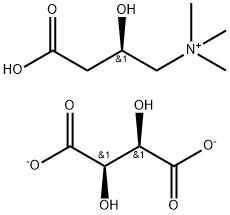

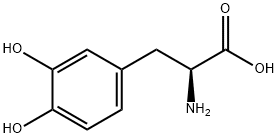
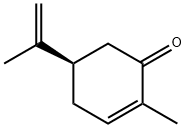
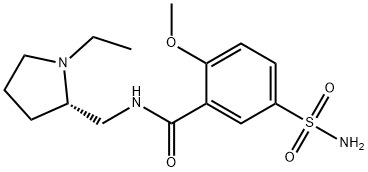
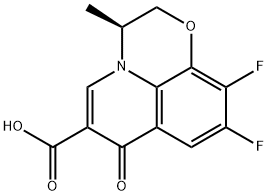


You may like
-
 L-CARNITINE BASE 99%View Details
L-CARNITINE BASE 99%View Details -
 L-Carnitine 98%View Details
L-Carnitine 98%View Details -
 L-Carnitine CAS 541-15-1View Details
L-Carnitine CAS 541-15-1View Details
541-15-1 -
 L-Carnitine CAS 541-15-1View Details
L-Carnitine CAS 541-15-1View Details
541-15-1 -
 L-Carnitine 99% CAS 541-15-1View Details
L-Carnitine 99% CAS 541-15-1View Details
541-15-1 -
 L - Carnitine, For Industrial,Laboratory etcView Details
L - Carnitine, For Industrial,Laboratory etcView Details
541-15-1 -
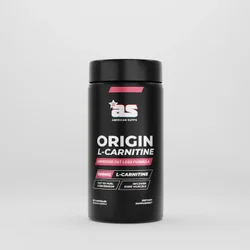 ORIGIN L-CARNITINE American Supps American Supps 60 Softgels HEALTH SUPPLEMENTSView Details
ORIGIN L-CARNITINE American Supps American Supps 60 Softgels HEALTH SUPPLEMENTSView Details
541-15-1 -
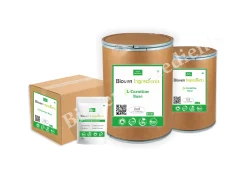 Bioven Ingredients L Carnitine BaseView Details
Bioven Ingredients L Carnitine BaseView Details
541-15-1
